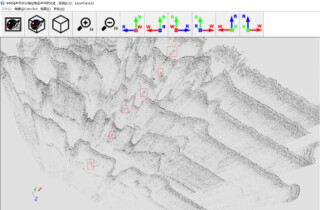

Diving in the World with Remotely Operated Vehicles (ROVs)
Diving robots by Mariscope Meerestechnik from Gettorf worldwide in search and rescue underwater in action. Recordings already used for television documentaries.
They dive in the most diverse waters of the world, they work in regions that are not accessible to humans, sometimes they save human lives and they all have one thing in common: They were built in the 7500-soul community Gettorf - diving robot Mariscope Meerstechnik. Regardless of their location, the so-called ROVs (Remoted Operated Vehicles) were designed, developed and built in a workshop in Eichkoppel - from Gettorf into the wide world.
"It is a pull-on without end to survive in the market," says company founder Christian Haag. "It takes a lot of passion to pull it off." The passion for diving robots is what unites Haag and his employees. "It's a great job that is incredibly fun," says Peter Adamek, 53, who has been working for Mariscope for a year. What it takes to build diving robots? "A lot of creativity, teamwork and a talent for mechanical connections", explains Niklas Becker (24), who works in the workshop together with Adamek. In addition, there are electronics technicians and the secretariat, but reinforcement in the form of welders or technical draftsmen is being sought.
If Christian Haag is in Gettorf, that's an exception. Usually, the father of two runs the company from Chile, where the company is headquartered in Puerto Montt as "Mariscope Ingeniera". Haag and his colleagues are also active in Argentina. But is built exclusively in Gettorf. It all started in Kiel in 1991, when the then 20-year-old student at the Institute of Oceanography needed a diving robot for a project. "At that time I had the idea of working interdisciplinary," explains Haag, who was born in Berlin and grew up in Cologne and speaks fluently in five languages (German, English, Spanish, French, Italian). However, the later graduate physicist in the field of oceanography received no support. "That's when I thought to myself, then I'll build an ROV myself." Three years had taken the development, then Haag could go it alone. "The end of 94 was the first ROV over the table," said the Mariscope founder.
Since then he has experienced many ups and downs with his company. "We are now the only company that has been in the same hands since its founding and has not yet been sold," says Haag. "This fills me with a certain pride, because the sale of marine technology is not easy." After Gettorf Mariscope came in 2016, there Mariscope has found a suitable home after a long search. And that's where the creative heart of the company beats. The components of the robots are painstakingly designed, built and put together to small technical miracles - although small is not exactly the case. The latest model, the "Commander MKIII", weighs 150 kilograms, has several rotors, two HD cameras, sonar, compass and other equipment.
How variable the remote-controlled diving robots are, shows a look at their purposes. Some are off the coasts of South America and Norway, surveying fish farms for possible damage underwater on behalf of insurance companies, others are looking for mines for the military, and others in Argentina are already involved in rescuing people trapped in a flooded mine were. Also in the Kiel Canal lock is a Mariscope ROV on the way and supports the divers in the maintenance. "Many of our robots are on duty 24 hours a day, they are constantly searching and rescuing," explains Haag.
One of his regular customers is the marine conservation organization Oceana. Dr. Matthias Gorny is the scientific director of Oceana in Chile and has been using ROVs for 15 years to take stock of ocean bottom fish and invertebrates - from Canada to the Antarctic, from the foothills of Patagonia and Cape Horn to the north of Chile and Easter Island in the Pacific , He has made hundreds of dives with various Mariscope robots to collect data on the occurrence of fish, coral and crabs, among others.
"Such underwater photography helps interest the public and decision-makers in protecting selected marine areas," explains Gorny. For example, Oceana, together with the documentary channel National Geographic, has released several films that have contributed to the Chilean government's creation of two large protected areas in the Southeast Pacific. The Gettorf scuba diving robots were used to take pictures of several submarine mountains and off several Pacific islands, such as Robinson Crusoe Island, some 500 kilometers from the Chilean mainland, and 12,500 kilometers from where the diving robots were built ,
Do you have questions about this case study?
Get in touch with Mariscope Meerestechnik e.K., and they would be happy to answer any questions you have about pricing, suitability, availability, specs, etc.

Related products

![Do-Giant-Tortoises-Make-Good-Neighbors-1[1].jpg](https://cdn.geo-matching.com/vRMO2Edp.jpg?w=320&s=a6108b2726133ff723670b57bc54c812)






